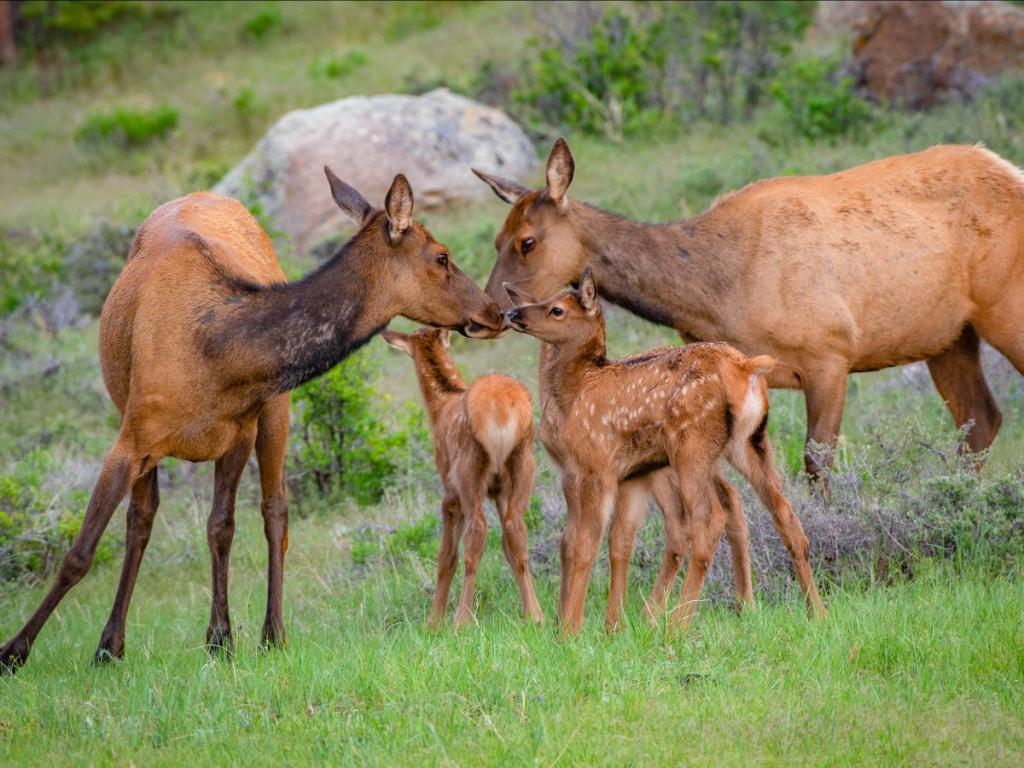Wildlife moms don’t need our help, leave young wildlife alone


Humans aren’t the only ones who take extraordinary steps to protect, nurture and raise their young. The animal kingdom is flush with moms that take the time to teach their young how to find food and protect themselves against the elements. The best practice is to leave young wildlife untouched in their natural habitat so they can grow and thrive in the wild.
Wildlife can also pose physical danger to humans. Wildlife is just that, wild, and can act in unpredictable ways. Animals such as moose, deer and elk with newborn calves and fawns can become aggressive to defend their young.
“Wildlife will be exhibiting normal protective behavior of their young,” said CPW Area Wildlife Manager Jason Duetsch. “Give wildlife extra space this time of year. Be sure to keep dogs on leashes. Dogs can trigger aggressive behavior and both moose and elk will chase a dog right back to their owner, presenting a dangerous situation.”
CPW encourages people to avoid thick willow habitats in riparian areas, where moose like to eat and rest, to decrease the chances of moose interactions. CPW urges dog owners to keep their dogs leashed while hiking and give moose extra space on trails.
A mother deer’s best survival strategy for her fawn is to leave it unattended for several hours a day. These fawns are not sick or forgotten; the mother carefully selects a location and will return periodically to feed her young. By staying away, she avoids drawing attention to its hiding place. Young fawns have exceptional camouflage, almost no scent and remain still, making it difficult for predators to spot them. If you find a fawn – don’t touch it.
“If you see a newborn fawn without its mother nearby, that is normal,” said Duetsch. “Deer, elk and pronghorn mothers hide their young for long periods of time while searching for food. Young that are removed cannot be successfully returned to the wild, as the mother will not continue searching for a missing baby or reject it because it was handled by humans.”
Every year CPW gets office visits and calls from the public reporting they “rescued” young wildlife. Many people wrongly believe they are "helping" young animals by picking them up, bringing them to a CPW office or even taking them home to feed them. Under Colorado law, feeding wildlife is illegal because it puts wildlife's health and safety at risk. Those in violation are subject to fines, and even worse, can cause the animal to become sick and die.
Other dangers of approaching and feeding wildlife include exposure to rabies, Salmonella, fleas, ticks and other parasites, bacteria or viruses that may be present in or on the animal.
Keep Wildlife Wild
All wild mothers have strategies for how to best raise and protect their young. If you come across young wildlife, do your part by simply leaving them alone.
- Do not feed or approach young wildlife.
- Be bear aware on trails and while camping.
- Keep dogs leashed on dog-friendly trails.
- Watch or photograph animals from a safe distance to avoid startling them or forcing them to flee.
- If you see wildlife that appears sick or injured, leave it alone. Call a local Colorado Parks and Wildlife office and talk to a trained wildlife officer for guidance.
For more information, read the online resources below.
- Living with Wildlife
- Spring Wildlife Advice
- Avoid Conflicts with Wildlife
- Video: How to Avoid Moose Attacks

Colorado Parks and Wildlife (CPW) is an enterprise agency, relying primarily on license sales, state parks fees and registration fees to support its operations, including: 43 state parks and more than 350 wildlife areas covering approximately 900,000 acres, management of fishing and hunting, wildlife watching, camping, motorized and non-motorized trails, boating and outdoor education. CPW's work contributes approximately $6 billion in total economic impact annually throughout Colorado.
DISCLAIMER: The Colorado Parks and Wildlife (CPW) website maintains press releases containing historical information that may no longer be accurate. Press releases are dated, which should be noted to determine whether the information provided is current. Please review our current regulations and brochures for up-to-date information.
 Bridget O'Rourke
Bridget O'Rourke